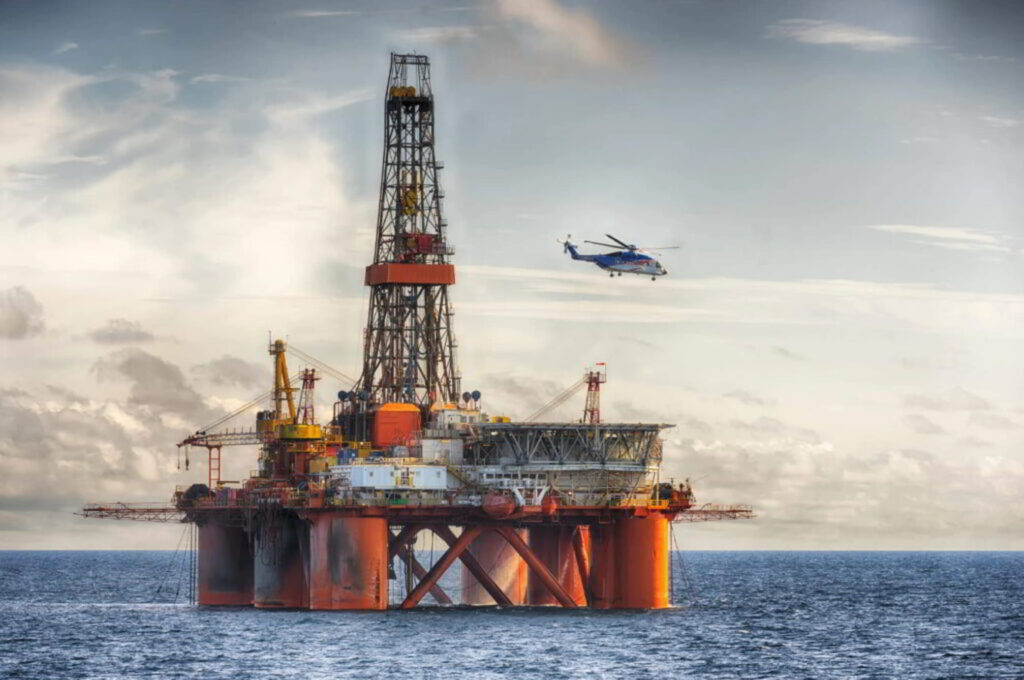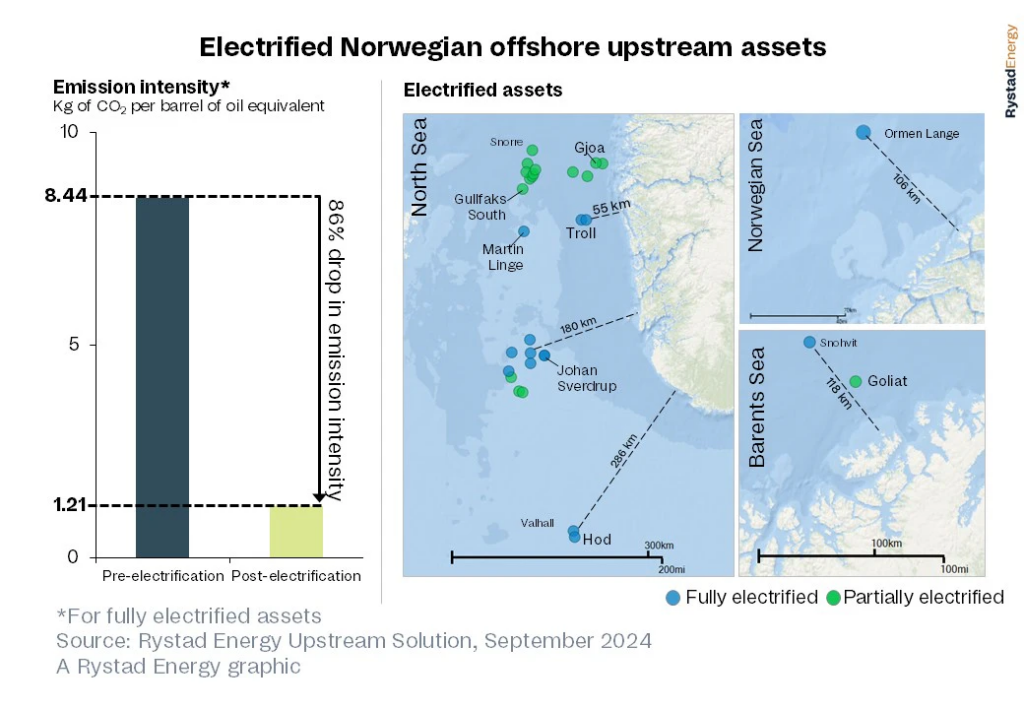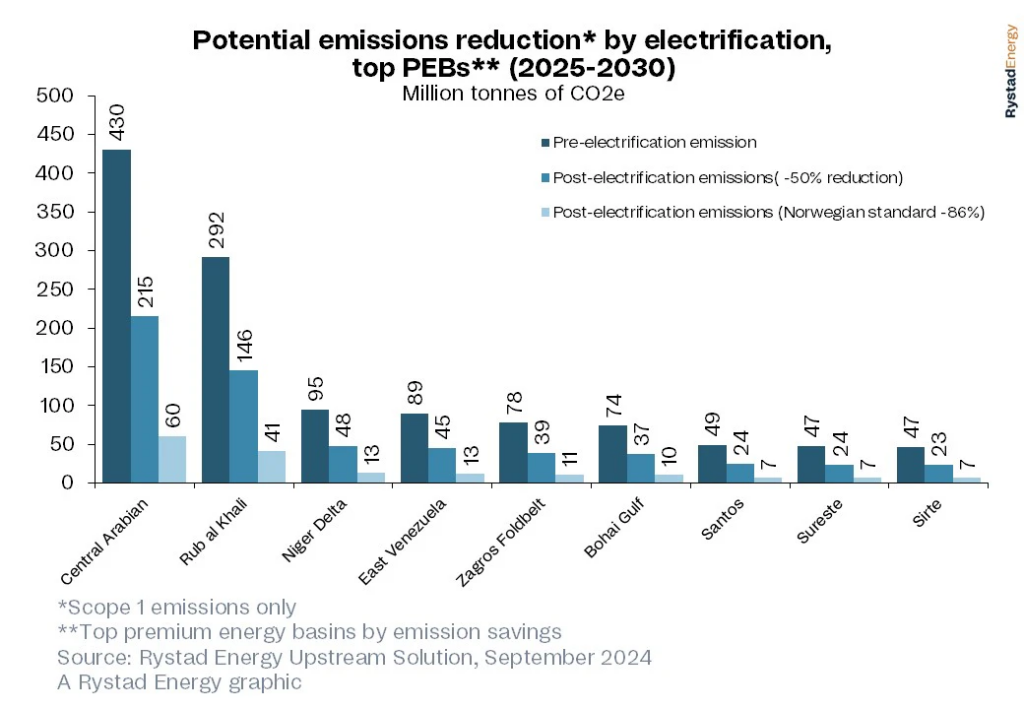
Illustration; Source: Rystad Energy
Switching away from fossil fuels toward low-emission and renewable power sources to run the world on clean and green energy is the end goal of a net-zero future. However, oil and gas are still needed in the interim period and possibly beyond to ensure the security of the global energy mix.
New energy market intelligence research from Rystad’s Palzor Shenga and Elliot Busby sings the praises of electrification by pointing out that more than 80% of emissions the upstream oil and gas production facilities generate can be wiped out by converting those assets to enable them to use electricity from renewables or natural gas that would otherwise be flared.
Shenga, who holds the role of Vice President of Upstream Research at Rystad Energy, commented: “As the world confronts the pressing issue of climate change, the oil and gas industry is under increasing pressure to minimize its carbon footprint and align its practices with global sustainability objectives. Where it’s possible and economically viable, electrification has great potential to lower the industry’s emissions while maintaining production output.”
Electrification runs the decarbonization show in Norway
To hammer the benefits of electrification home, the duo highlights that fully electrified rigs and other assets on the Norwegian Continental Shelf (NCS) emit 86% less or 1.2 kilograms of carbon dioxide per barrel of oil equivalent (kg of CO2 per boe) produced, compared to the 8.4 kg of CO2 per boe emitted by the same assets before electrification was implemented.
The research sees Norway’s location as an “almost unique” prime position among big oil and gas producers, since the opportunity to tap into its renewable energy resources, most notably hydroelectric power, enables it to achieve major greenhouse gas emissions curbs from upstream production.
Rystad Energy emphasized that the European country was “an early mover in refitting its assets to run on clean power, and now has plans to cut emissions from the continental shelf by 70% by 2040.”
Given that the lion’s share of the country’s key production hubs are perceived to be strategically located near potential renewable energy sources, the research concludes that this facilitates the transition from fossil fuels.
Electrification challenges: Tackling obstacles to combat emissions
While Norway is portrayed as being in an almost perfect position to unleash electrification, Rystad acknowledges that other producing countries may not be as lucky since they could face logistical hurdles when converting assets, such as long distances from the mainland, a lack of power grid infrastructure, and limited renewable power capacity.
Despite these potential setbacks, the research underscores that even partial electrification will bring a drop in emissions. The company pinpoints premium energy basins (PEB), a term it coined to describe oil and gas basins with ample hydrocarbon reserves and the potential to incorporate environmentally friendly practices, as spots that could hold the key to minimizing the GHG emissions footprint.
“We have identified 30 such basins worldwide, which collectively contribute more than 80% of the world’s oil and gas this year and will continue to do so until 2050. If PEB assets electrify and reduce emissions by 50%, a total of 5.5 gigatonnes of carbon dioxide (Gt of CO2) would be avoided by 2050,” explained Rystad while adding: “Based on the accepted industry standard calculation, this CO2 reduction would equate to about 0.025 degrees Celsius of global warming avoided during the same period.”

Note: This calculation only includes upstream extraction emissions, assuming that 222 GtCO2 emitted leads to 0.1°C warming, and methane emissions are disregarded.
Unleashing electrification to step up decarbonization
According to the research findings, electrification requires careful planning, encompassing the selection of optimal technologies, assessment of total costs, and strategies to ensure a continuous energy supply, particularly in remote locations with limited grid access. Aside from these, economic and financial viability need to be prioritized.
Furthermore, Rystad claims that a proactive approach to electrification can enhance operational efficiency and open new revenue streams by selling excess renewable energy, thus, it elaborated: “To understand the impact of electrification on upstream emissions, we examined the potential for emission reduction in top PEBs. The 28 PEBs identified in the report offer estimated total emission savings of about 1.3 billion tonnes of CO2 between 2025 and 2030.
“The top 10 PEBs (by emissions savings) alone account for over 80% of these savings (Figure 3), with the Middle Eastern Rub al Khali (370 million tonnes of carbon dioxide equivalent [CO2e]) and Central Arabian (251 million tonnes of CO2e) leading the charts. Electrification in these predominantly onshore basins, if adopted more widely, would largely be driven by drawing power from a clean onshore grid.”
Coming to grips with flaring menace
Rystad Energy underscores that flaring, representing burning off excess natural gas that cannot be processed or sold, wastes a valuable resource and emits substantial amounts of CO2 and methane into the environment.
As a result, it is believed that flaring has a major role in global emissions, primarily due to the lack of economic incentives, regulatory frameworks, or technical capabilities to develop gas markets and infrastructure.

Based on the research figures, about 140 billion cubic meters per annum of gas has been flared globally in the last 10 years, equaling about 290 million tonnes of CO2e emissions annually, primarily driven by major producers in North America, the Middle East, and Africa.
Therefore, Rystad Energy paints flaring avoidance as a potentially effective way of reducing upstream emissions for electrified assets and those with limited electrification potential.